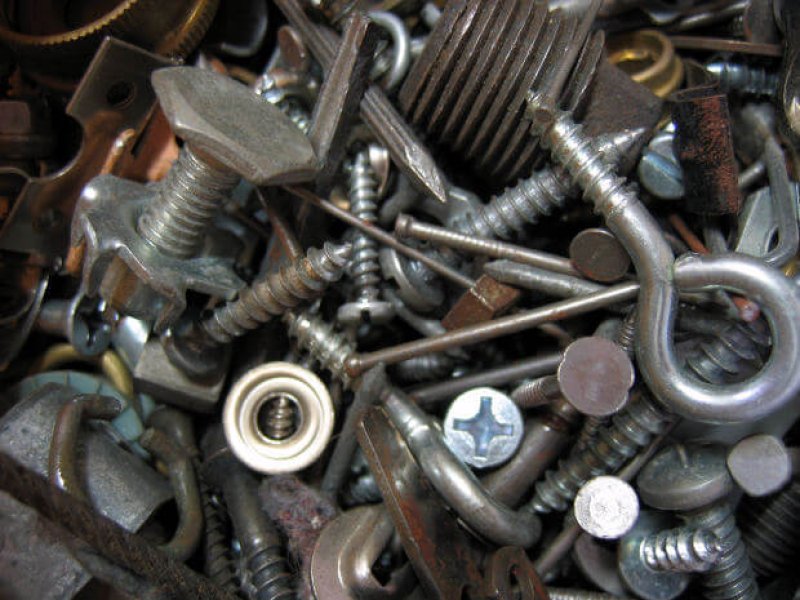In September of 2012, Science boldly declared that the ENCODE project (think of it as the Human Genome Project on steroids) had dealt a deathblow to the idea that most of our genome was comprised of useless genetic material — also known as “junk DNA.”
A new paper in PLOS Genetics argues that the rumors of Junk DNA’s death have been greatly exaggerated. “There is an unfortunate tendency,” authors Alexander F. Palazzo and T. Ryan Gregory write, “for researchers and science writers to proclaim the demise of junk DNA on a regular basis without properly addressing some of the fundamental issues that first led to the rise of the concept.”
There are, they argue, many reasons why junk DNA became a popular concept in genetics — and none of these reasons have been overthrown by recent discoveries, ENCODE’s headline-grabbing results included.
They begin with a history lesson, pointing out that even the people who first coined the term “junk DNA” in the 60s were not ignoring the potential functions of noncoding DNA. Many modern spins on junk DNA potray it as an idea born of ignorance: scientists didn’t know any better so they wrote off all of this important genetic material with a dismissive term. Not so, write Palazzo and Gregory:
“Importantly, the concept of junk DNA was not based on ignorance about genomes. On the contrary, the term reflected known details about genome size variability, the mechanism of gene duplication and mutational degradation, and population genetics theory.”
Each of these lines of reasoning hold up, leading to the ultimate conclusion that having some useless DNA in our genomes isn’t just something that’s plausible but seems a necessary byproduct of how evolution works.
First up is the “onion test.” The domestic onion has a genome five times larger than our own. Assuming that all of that genetic information does something, what exactly is it doing in an onion? This test is a byproduct of our knowledge that genomes vary wildly. Do more “complex” organisms have larger genomes? No. Do closely related species always have similarly sized genomes? No. In short, genomes vary so hugely in their size and complexity, and with so little apparent rhyme or reason when mapped against our understanding of evolutionary descent, that it seems like the size of genomes must be decoupled from the processes (i.e. natural selection) that shapes species.
Next the authors run through the various components of the genome normally considered “junk” — transposable elments, highly repetitive DNA, introns, pseudogenes — and find that in each case there are examples, yes, of specific bits of these “junk DNA” types being co-opted for useful biological function. But none of these specific examples overthrow the entire idea of junk DNA.
Perhaps the fascinating point Palazzo and Gregory make is that, according to the principles of population genetics, there is a minimum threshold a mutation must pass before it becomes “visible” to natural selection. Furthermore, the smaller a population, the easier it is for useless mutations to accumulate without coming under selective pressure. In other words, evolution almost demands that there be some “junk” floating around in our genomes.
In fact, it seems to argue that we need a whole lot of junk DNA to prevent “mutational meltdown.” Junk DNA basically provides a safe space for mutations to occur, since that genetic material wasn’t serving a functional role to begin with. Given the rate at which mutations occur, it seems like a large proportion of junk DNA is an evolutionary necessary buffer that keeps a population from collapsing because there are too many deleterious mutations in the functional part of its genome.
All of this can be a bit misleading, points out Carl Zimmer in his excellent summary of the Palazzo-Gregory paper. “Junk” in biology doesn’t mean the same as it does to you and me; it doesn’t mean “unimportant.”
Assume, for instance, that Palazzo and Gregory are correct, and part of the reason large proportions of junk DNA persist is to act as a buffer against deleterious mutations. Well, in that case the junk is not doing anything to actively add to our function as living things, but it’s sure as hell important to keep mutations from overwhelming the parts of our genome that do actively add to our function.
“The junk is part of us,” Zimmer writes, “and it, too, helps make us what we are.”
And what we are appears to be a complicated mess of genetic material, rife with repetition and mistakes, but still assembled in such a way that the important bits can do their job and provide the blueprints for the vast diversity of life.
Kenrick Vezina is Gene-ius Editor for the Genetic Literacy Project and a freelance science writer, educator, and naturalist based in the Greater Boston area.
Sources:
- “The Case for Junk DNA,” Alexander F. Palazzo & T. Ryan Gregory | PLOS Genetics
- “The Case for Junk DNA,” Carl Zimmer | National Geographic (blog)
- “ENCODE Project Writes Eulogy for Junk DNA,” Elizabeth Pennisi | Science
Additional Resources:
- “Is Junk DNA Really Junky? The delicious, religious debate over what most of our genome is good for,” Sam Kean | Slate
- “What Junk DNA? It’s an Operating System,” Patricia Fitzpatrick Dimond | Genetic Engineering & Biotechnology News































